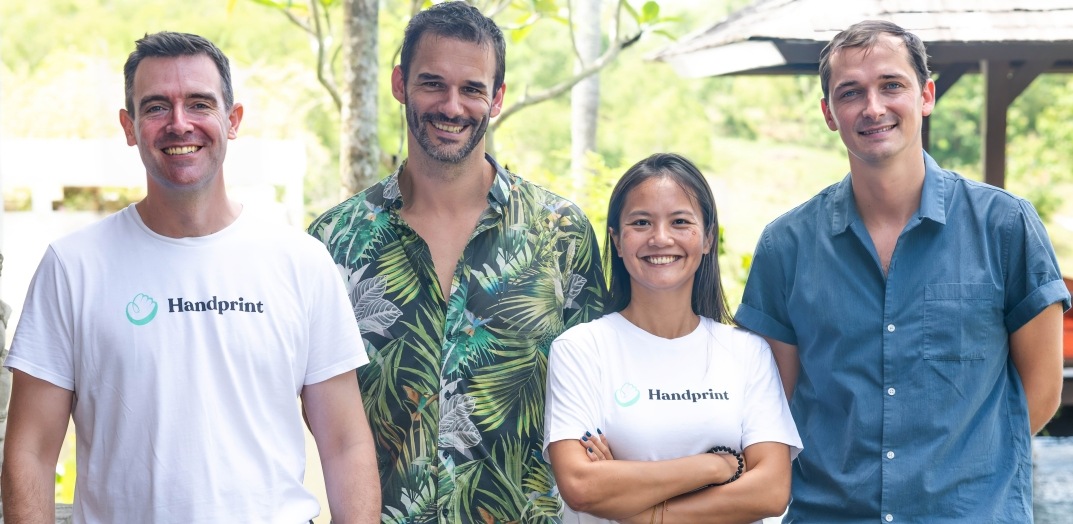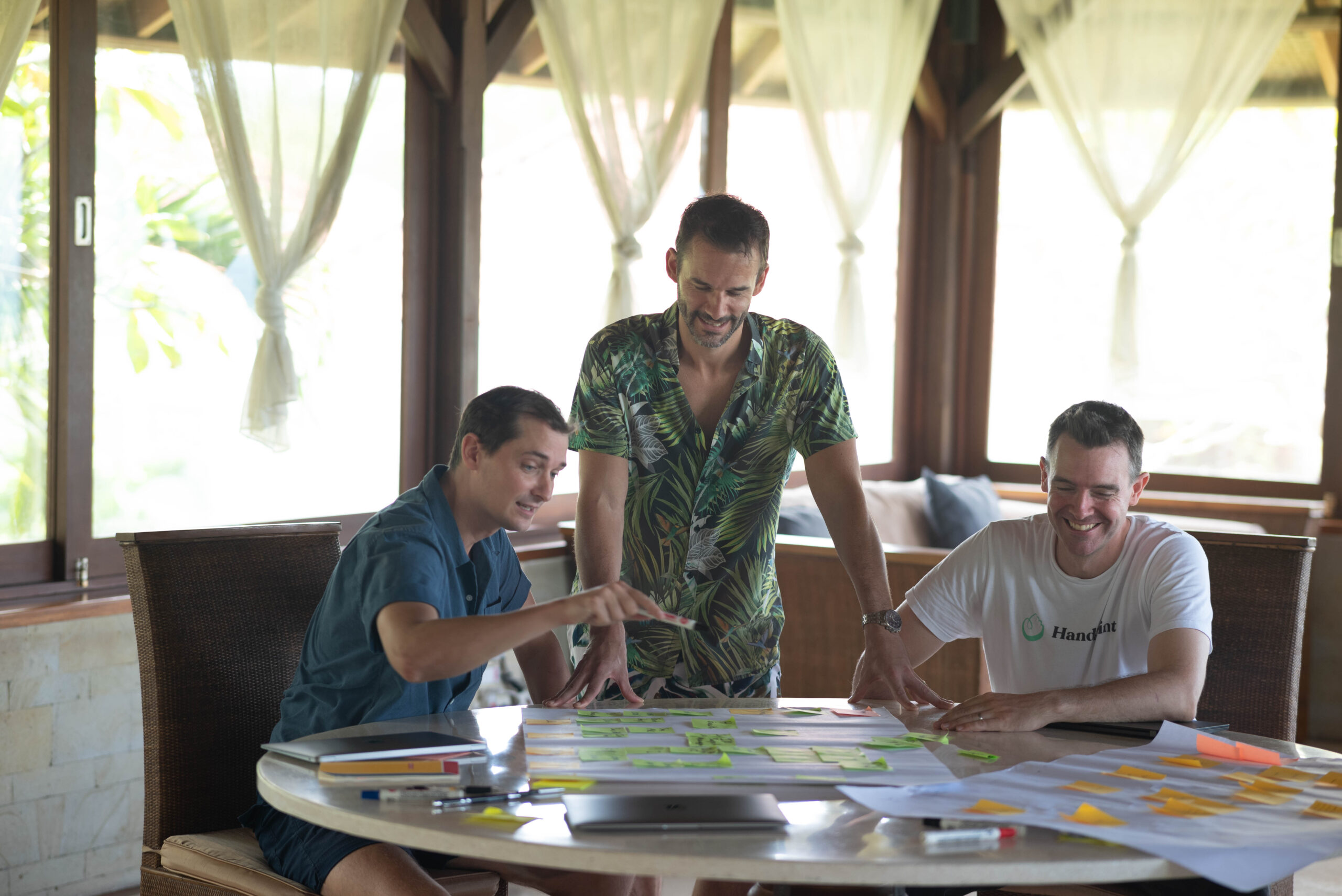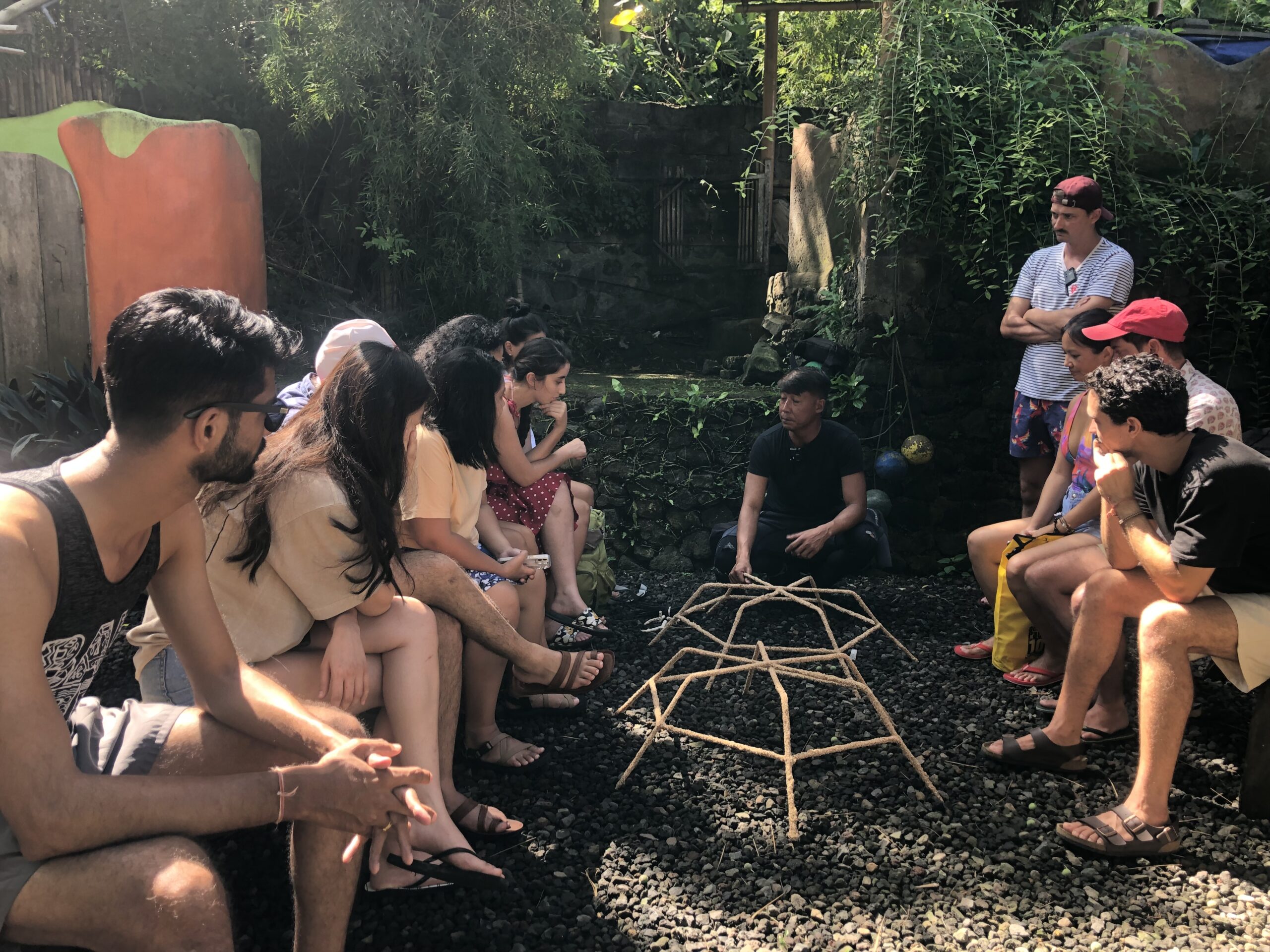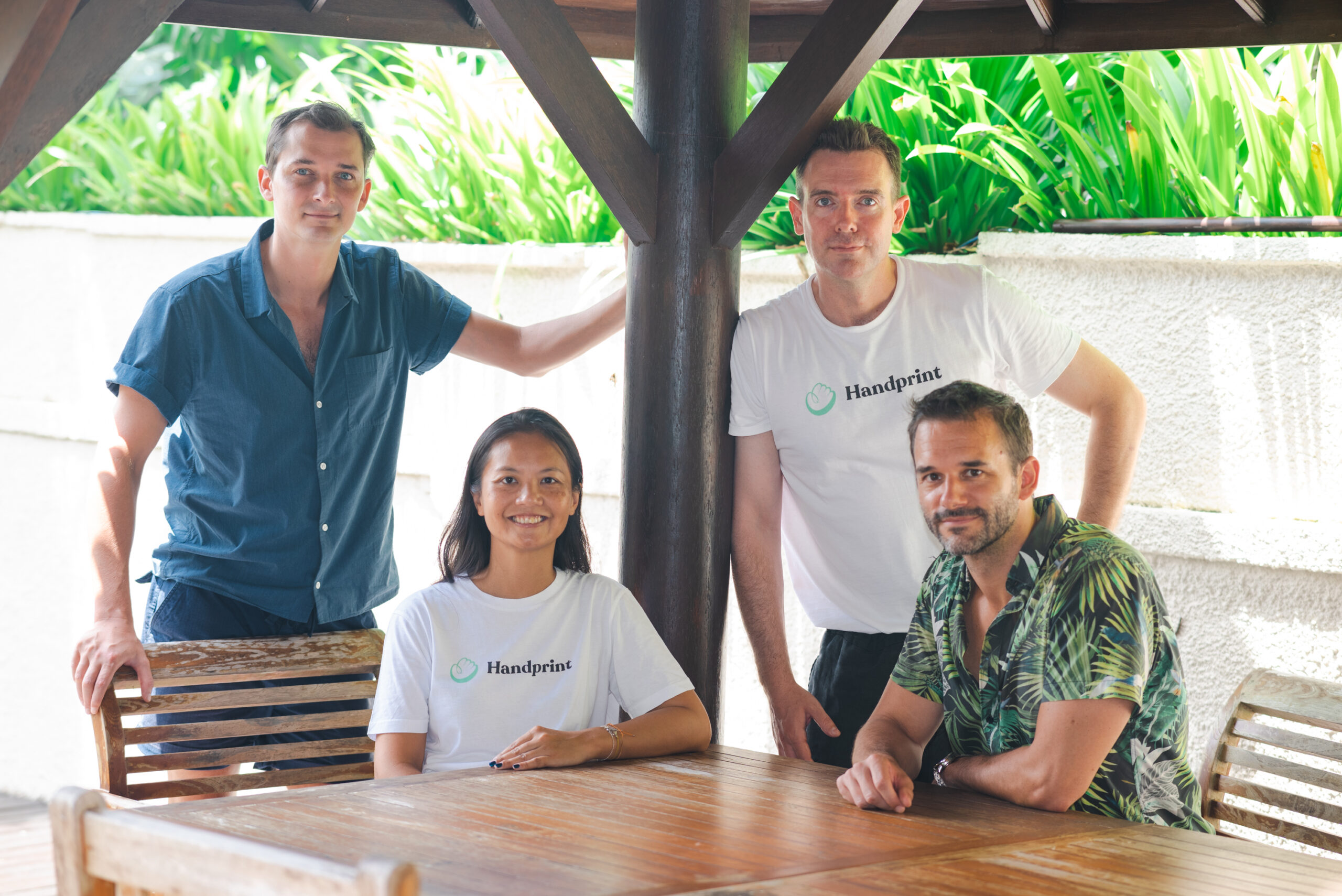Meet Simon from Handprint
Q: Can you introduce yourself and your startup?
A: I’m Simon Schillebeeckx, an academic entrepreneur based in Singapore for nearly a decade. In December 2019, I co-founded Handprint alongside two partners. Handprint is a positive impact platform designed to bridge the gap between companies and leading impact organizations worldwide. Our platform empowers companies to contribute to credible, meaningful impacts automatically. We focus on making it effortless for businesses to engage in impactful and sustainable activities.
Q: What inspired the creation of Handprint?
A: The idea for Handprint emerged from a blend of personal and professional experiences in my academic career. As a professor in a business school, my research primarily focuses on the intersection of digital technology and environmental sustainability. We conducted various research projects, including case studies on mangrove restoration and a significant project for the UN about financing sustainability challenges and the potential role of digital technology in enhancing this process. The key findings, published in 2019, highlighted two major challenges companies face in creating positive environmental impact: credibility and value capture.
Handprint was founded on the premise of aligning credible impact with value creation for companies. Our goal is to establish a scalable model that can significantly contribute to addressing climate change and biodiversity collapse by making it beneficial for businesses to participate. We aim to create a system where impactful environmental actions and corporate profitability can coexist and reinforce each other.
Why Startupbootcamp?
Q: What led to your decision to join Startupbootcamp?
A: In the initial stages of Handprint, we saw immense value in participating in boot camps, accelerators, and incubators. These platforms offer a wealth of opportunities, particularly in terms of networking, education, and potential sales channels. Specifically, Startupbootcamp stood out due to its ability to connect us with particular industries that expressed interest in our work. For a young startup, the learnings and insights gained from such experiences are invaluable. They not only provide a foundational understanding of the entrepreneurial landscape but also open doors to vital industry connections and potential customer bases. The combination of networking, educational growth, and sales opportunities were the primary motivators for us to join Startupbootcamp and leverage the platform to grow and evolve our business.
Our decision to join was also strategically driven. Being based in Singapore and Indonesia, the prospect of working with an accelerator in Australia was appealing due to its relevance to our market. Australia has a high level of corporate and individual awareness about sustainability and the need to protect the planet, making it an ideal location for us to expand our network and impact. Joining Startupbootcamp in Australia aligned well with our strategic goals and market focus.
Application Process for Startupbootcamp
Q: Could you detail the application process for Startupbootcamp?
A: The application process for Startupbootcamp, from what I recall, wasn’t too complex. Having applied to several such programs over the years, we developed a system for efficiently responding to common application questions and storing our answers for future use. An interesting aspect of our experience was the initial negotiation over equity. Startupbootcamp initially proposed a high equity percentage in exchange for their investment. We pushed back on this and, after some negotiation, reached an agreement that was more favorable for us and satisfactory for them. It felt more like they were keen on having us in the program, which was a positive sign.
Q: What aspects of Handprint do you think made it stand out for Startupbootcamp?
A: Handprint occupies a unique position in the impact integration, nature tech, and climate tech spaces, which I believe sets us apart. Unlike many companies focused solely on carbon reduction and mitigating negative externalities of production, Handprint emphasizes creating positive impacts, hence our name’s play on ‘handprints’ rather than ‘footprints’. Our distinct approach includes offering a broad spectrum of impact types on our platform, not limited to just carbon, trees, or plastic, which covers most of our competitors. On top of those three impact types, we also provide avenues for supporting biodiversity, food and water access, education, female empowerment, human rights, and coral restoration, among others. This wide variety allows companies to engage in diverse impact initiatives through our platform.
Another unique aspect is our direct relationships with NGOs and structured contractual frameworks, enhancing how we create, validate, and verify impacts. Furthermore, our roots in academia add a scientific rigor to our work. Both Ryan, one of our co-founders, and I come from academic backgrounds with PhDs in relevant fields. This academic foundation contributes significantly to our credibility, ensuring that our clients trust the authenticity and effectiveness of the impacts they support through Handprint, be it planting trees in Indonesia, restoring coral in Australia, or removing plastic from rivers in Egypt. Our commitment to transparency in money flows and field activities reinforces this trust. Our approach is not just about facilitating transactions but about building a reliable and comprehensive ecosystem for positive environmental impact. This multifaceted and scientifically grounded approach, I believe, is what made Handprint particularly appealing to Startupbootcamp.
Inside Startupbootcamp’s Program
Q: Can you describe what the Startupbootcamp program looked like once you were part of it?
A: The program for us, being based in Singapore, was conducted entirely online. It included regular touchpoints and educational sessions that covered various aspects like business models, pitch decks, and other fundamental areas. The learning approach was a blend of interactive sessions and video-based content, sometimes accompanied by quizzes.
A significant component of the program involved interactions with the corporate backers who influenced the selection process. These backers, companies looking for startups in specific areas, facilitated many discussions. However, it’s crucial for startups to assess the actual product-market fit with these companies. For us, unfortunately, the fit wasn’t there, which is a risk inherent in any such program.
Regarding the program’s organization, it had a structured lesson plan, but the pace varied among startups. Some completed it rapidly, while others took their time or engaged less fully. Importantly, the engagement with Startupbootcamp didn’t end with the program’s conclusion.
Years later, we are still in touch with them, partly because they are investors and for continued support like introductions to potential partners. They periodically reach out with new programs or opportunities, which can be immensely helpful. This ongoing relationship, extending beyond graduation, is a hallmark of a good accelerator program. The real journey often begins after the program, and Startupbootcamp has continued to provide valuable support and introductions, especially related to our engagements with banks and other financial institutions.
Q: During the program, what was the extent of mentorship and hands-on help provided?
A: We did have access to mentors in the Startupbootcamp program. The level of hands-on assistance varied depending on how one defines ‘hands-on.’ We engaged in some brainstorming sessions with a mentor, which proved useful for refining certain aspects of our business model. However, if ‘hands-on’ implies mentors actively getting involved in the operational aspects of our startup, like reaching out to a large number of potential partners or clients, that wasn’t the case. Startup Bootcamp’s approach is different from some other programs or investors who might take a more intensive, operational role in the startups they support. In our experience, the program was more about providing guidance and strategic thinking rather than direct involvement in day-to-day operations.
Q: Did you get any funding through the Startupbootcamp program?
A: Startupbootcamp typically offers a fixed amount of funding for a specific percentage of the company. However, this arrangement is open to negotiation. In our case, we had already completed a funding round prior to joining the program, so we had clear expectations regarding investment conditions. We negotiated with Startupbootcamp to align their investment with the terms of our previous funding round. We made it clear that we were unwilling to compromise on these terms. Eventually, we reached an agreement that was satisfactory to both parties and signed a contract. Although investment contracts can be complex and sometimes challenging to navigate, we were able to settle on terms that worked well for us. Our situation was somewhat unique compared to other startups in the program. Many were in their early stages, some even pre-money or pre-product market fit. Our goal for joining the program was more focused on connecting with specific companies, such as Mitsubishi and NYK from Japan, due to their potential synergy with our services. This strategic approach and our prior funding experience influenced our negotiations with Startupbootcamp regarding the investment.
Achieving Milestones in Startupbootcamp
Q: During your time in the program, what significant milestones did Handprint achieve?
A: While there were certainly product-related milestones, one of the most significant achievements during the program was initiating conversations with our current lead investor. This was a pivotal moment for us, particularly since it was our first experience dealing with a term sheet and negotiating contract terms. The investor we were engaging with was seasoned in these matters, but for us, it was uncharted territory.
Startupbootcamp provided valuable assistance in navigating the legal aspects and understanding the term sheet, which was crucial in these discussions. While our initial goal of collaborating with companies like Mitsubishi and NYK didn’t materialize as we had hoped, the program still marked an important step in our growth. This experience taught us a lot about adaptability and resilience in the startup world. Learning to handle setbacks and unexpected outcomes is part of the journey, and in this case, it led us to a significant opportunity with our lead investor.
Current Status and Future Goals of Handprint
Q: Could you update us on Handprint’s current status and future objectives?
A: Handprint has grown considerably. We now have a team of 22 people across eight countries and are actively involved in projects in 17 countries. A significant achievement for us has been reaching 2.5 million square meters in nature restoration, which is a key metric we track. This figure was noted around August, so our impact has increased since then.
We’re currently launching a Wefunder campaign in the US and setting up a US company to facilitate this. We’re also on the brink of securing several large deals with both well-known and lesser-known, but significant, companies. Looking ahead, 2024 appears to be a pivotal year for us, marking a transition from the startup phase to more substantial growth and expansion.
Despite the challenges faced by startups, particularly in the sustainability space due to economic and geopolitical uncertainties, we remain optimistic about the future. We’re hopeful that the upcoming year will bring positive developments and growth opportunities. For those interested in supporting our journey, our Wefunder campaign page offers an opportunity to invest in Handprint and be part of our mission to make a positive impact on the environment.
Q: What growth strategies and channels have you experimented with for Handprint?
A: At Handprint, we’ve developed an internal growth engine centered around cold emailing, identifying ideal customer profiles (ICPs), and LinkedIn outreach. This tool has been effective in reaching a wide audience and achieving high opening rates, though finding the right people at the right time remains a challenge. What has worked best for us are warm introductions and leveraging personal networks. Working with ambassadors who understand and appreciate our mission has been invaluable. They introduce us to their networks, significantly aiding our growth. We’ve also adapted our business model from strictly B2B to a B2B2B2C model, involving channel partners. These partners make our impact capabilities available to their customers. This approach allows us to simultaneously address multiple industries, which would be challenging to do directly.
In terms of advertising, we engage in both paid and organic methods, but on a limited scale, as we aim to be economical with our spending. A notable success in our growth strategy has been developing thought leadership on LinkedIn. Our CEO, Mathias, and I have built substantial followings there. A key moment for us was when we published an original version of our nature tech map last year. It went viral, leading to over 1.5 million interactions and thousands of new connection requests. This unexpected success significantly expanded our audience and provided a substantial boost. I would advise any founder to establish themselves as a voice of authority in their field on LinkedIn and build a community interested in their insights. This network can comprise potential employees, future clients, or individuals who can refer you to others. Engaging with your community on platforms like LinkedIn is an effective way to grow your presence and impact.
Final Advice for Founders Considering Startupbootcamp
Q: What advice would you give to founders considering applying to Startupbootcamp?
A: My primary advice for founders thinking about joining Startupbootcamp is to carefully assess whether the corporate partners involved in the program align closely with your Ideal Customer Profile (ICP). It’s crucial that these partners fall squarely within your target market. If they don’t, you might still gain value from the program, but it could also mean investing time that might be better spent elsewhere.
Reflecting on our own experience, I’m glad we participated in Startupbootcamp, but in hindsight, we would have benefited more from joining a bit later, particularly in a batch focused on banking. This sector would have been a much better fit for us. Therefore, it’s important to consider not just the immediate opportunity but also the strategic fit and timing of the program in relation to your startup’s stage and focus. This approach ensures that you maximize the benefits and opportunities that accelerators like Startupbootcamp can offer.




